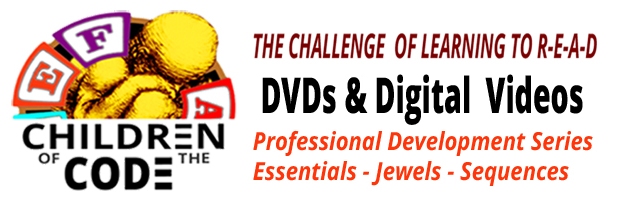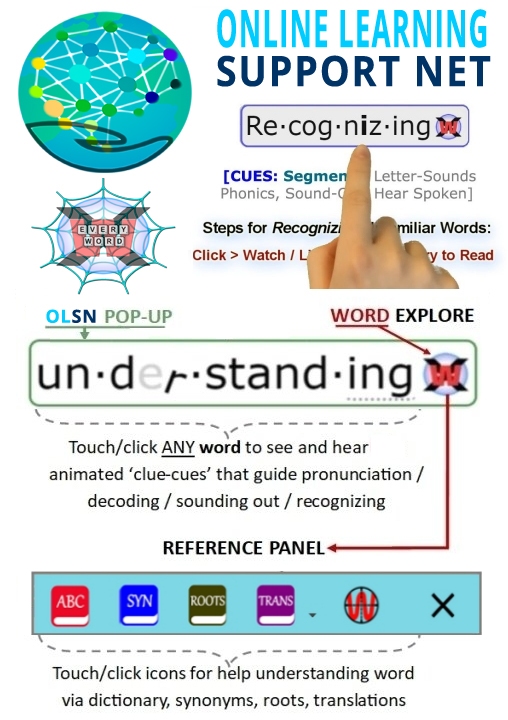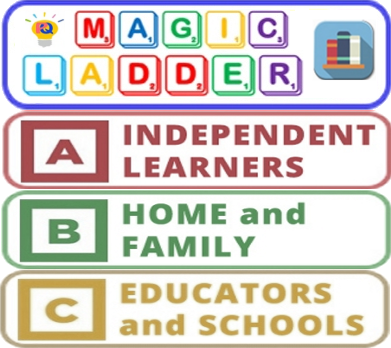Affects
Note: Remember to click on any word on this page to experience the next evolutionary step in technology supported reading.
Affects 'Aim' Cognition
Most of us were raised with the idea that emotion is only something that distracts us from solid, important thinking. But now we know that there’s more than one kind of thinking, that the kind of thinking we see in reading involves certain parts of the neocortex that are our most, our highest level of cognitive ability. But what people haven’t realized until fairly recently is that the processing equipment that we call the neocortex does not start to operate until the emotion system, or what we call the affect system, aims the cognitive mechanism.
Donald L. Nathanson. M.D., Clinical Professor of Psychiatry and Human Behavior at Jefferson Medical College, and founding Executive Director, Silvan S. Tomkins Institute. Source: COTC Interview – http://www.childrenofthecode.org/interviews/nathanson.htm#AffectsAimCognition
The Effect of Affect on Cognitive Processing
Experimental psychologists began more than a hundred years ago to ask what it is. What factors control learning? That basically modulate it? That make its effect affective? That make it stronger? That vivify it? This has been a great interest in psychology and a great interest in neuroscience ever since. We know, for example, that if you learn under the right emotional conditions, you never forget. Learning is very affective.
Michael Merzenich, Chair of Otolaryngology at the Keck Center for Integrative Neurosciences at the University of California at San Francisco. He is a scientist and educator, and found of Scientific Learning Corporation and Posit Science Corporation. Source: COTC Interview – http://www.childrenofthecode.org/interviews/merzenich.htm#TheEffectofAffectonCognitiveProcessing
Distraction and Affect
It’s so much taken for granted that small children are distractible that we don’t ask often enough what does that mean that they’re distractible? But the answer is pretty simple. In the young child, every time one of these affect spotlights go off and points attention somewhere, that’s where the child is going to look and is going to look in the way motivated by that particular affect.
Donald L. Nathanson. M.D., Clinical Professor of Psychiatry and Human Behavior at Jefferson Medical College, and founding
Executive Director of the Silvan S. Tomkins Institute.
Source: COTC Interview – http://www.childrenofthecode.org/interviews/nathanson.htm#DistractionandAffect
Affect Scripts
In every aspect, when we learn to read our affective experiences of learning to read form what we call a script. It’s not a reflex where something happens the same way each time when you stretch a tendon. It’s a script that forms as the result of hundreds of affective experiences that we bundle together, then form into a bundle or family of scenes, and then develop an emotional, an affective response to the bundle.
So, script formation is not really a reflex. Script formation is a highly complex assembly of similar scenes, and once the mind realizes that they are similar enough to be grouped, we have an attitude toward the group. At that point the affect that’s associated with the attitude becomes the governing affect of the process. Thus, if I’ve never had any trouble with reading, and everything they’ve given me in the succession called successful education allows me to take in information and I become stronger and larger and happier with everything I learn, then with avidity I look forward to every book given to me. But if my experience of reading is almost always fraught with shame, then shame comes to be the overriding, magnifying affect as we form scripts.
Donald L. Nathanson. M.D., Clinical Professor of Psychiatry and Human Behavior at Jefferson Medical College, and founding Executive
Director of the Silvan S. Tomkins Institute.
Source: COTC Interview – http://www.childrenofthecode.org/interviews/nathanson.htm#AffectScripts
Accumulative Effect of Affect
When we counted up the differences and did that kind of elaboration – how many affirmations an hour? The notion that by the age of four the children had heard about 750,000 times that were right and about 120,000 times that they were wrong. With very taciturn parents it was almost the reverse. They only were right about 120,000 times and had heard they were wrong about 250,000 times.
In other words, the massive life-time experience of affirmations and prohibitions indicating you’re right and you’re wrong is a life-time batting average that’s hard to overcome with just a little bit of positive experience.
Todd Risley, Professor Emeritus of Psychology at the University of Alaska.
Co-Author: Meaningful Differences in the Everyday Experience of Young American Children.
Source: COTC Phone Interview – http://www.childrenofthecode.org/interviews/risley.htm#LanguageEmotionalHealth
(Note: The phone interview transcript does not match the video interview verbatim. The previous quote was taken from the video interview.)
Understanding Affect is Critical to Education
We’re right in the beginning of our path toward understanding the relation between affect and education. We’re beginning to focus on shame. Right now we’re going to use that word and these concepts constantly and in a couple of years we won’t have to…
The role of affect in education, the role of the affect interest, its impediment that triggers shame, the role of shame in self esteem, the role of shame in cognitive shock, all these things shame does, we can learn this easily and then build new systems of education where we’ll never have to mention all of this affect language again.
Donald L. Nathanson. M.D., Clinical Professor of Psychiatry and Human Behavior at Jefferson Medical College, and founding Executive
Director of the Silvan S. Tomkins Institute.
Source: COTC Interview – http://www.childrenofthecode.org/interviews/nathanson.htm#ImportanceofUnderstandingAffect
Self-Esteem and the Affect of Shame
I think the low self-esteem, the sense of shame, is life-long. At the National Center for Learning Disabilities, we have a wonderful board of directors. We have at least two individuals on that board, both of whom have dyslexia and both of whom are former governors. They are extraordinarily accomplished individuals, both of them dyslexic. And both have talked at length about the continuing sense, not just of frustration or memories of failure, but precisely a sense of shame that is still remembered…classroom based, other children around, a teacher, not being able to do what other children seem to be able to do so easily. It stays for a lifetime. (More “Shame Stories”)
James Wendorf, Executive Director, National Center for Learning Disabilities.
Source: COTC Interview – http://www.childrenofthecode.org/interviews/wendorf.htm#SelfEsteemShame
Is Education Pervasively Backwards?
…There’s been insufficient attention paid to the interactive nature of teaching and learning. In a sense, that if the teaching materials are designed well, learning will follow from that…
It is certainly the case that learning ultimately resides in the child’s brain and that learning in any circumstance is the joint function of the materials as they’re presented, as well as what the learner brings to that situation.
And again there needs to be a tuning, an alignment of the instruction materials and the interaction with what the child is bringing to the situation, not only in terms of cognitive background and assumptions, but also motivational background as well.
Grover (Russ) Whitehurst, Director, Institute of Education Sciences, U.S. Department of Education.
Source: COTC Interview – http://www.childrenofthecode.org/interviews/whitehurst.htm#EducationPervasivelyBackwards













